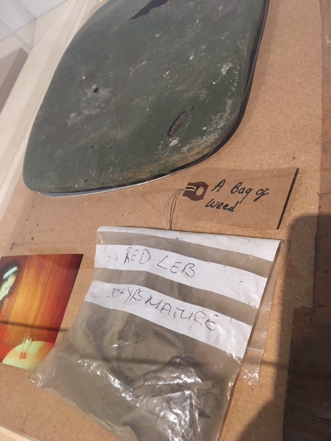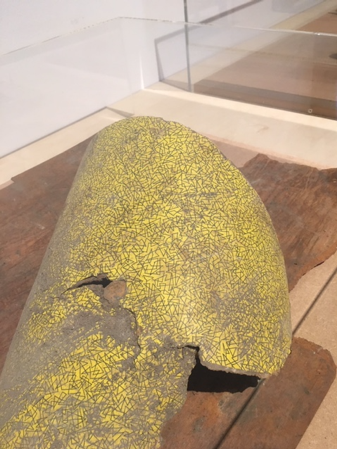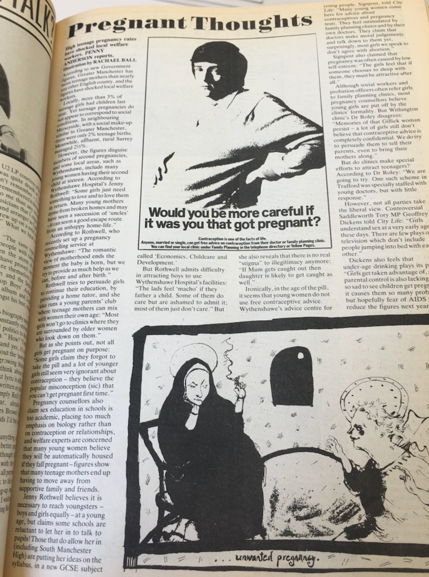Rachel Thomson
The term digging where you stand was introduced in 1978 by Swedish oral history activist Sven Lindqvis who called upon factory workers to investigate their own workplaces as a form of self-organisation. I know this because Andrew Flinn provided a compelling overview of community history making and archiving at the Sussex Humanities Lab. Andrew has used the slogan ‘Dig where you stand’ to describe and organise community heritage work – inviting people to research their own communities, and localities. Sometimes this means literally digging where they stand.
Last time I was in Manchester I went to the Whitworth Art Gallery to see an exhibition about the Reno night club, demolished in 1990 and dug up in 2016. Lead by community activist and playright Linda Brogan and funded by the HLF, archaeologists at Salford University literally dug at the site of the Reno, with community members joining in to reveal treasures including the original dance floor, old library cards and a thirty year old bag of weed! The Reno had been a haven for a generation of young people who identified as ‘half-caste’, the children of white Mancunian mothers and African or west Indian fathers. On the back of the excavation an oral history and community memory project has been undertaken that documents how groups of friends installed themselves within the club, had their own spaces of standing, watching and dancing – how the Reno was part of a network of community spaces in Liverpool, Nottingham and Cardiff . The Whitworth Art Gallery has given a large space over to the project and includes vitrines displaying objects, screens for listening to A/V recordings of interviews, collections of memorabilia, an in-memorium wall marking the faces of the many players in the story who are now dead, long before their time. The project and the website that accompanies has the feeling of a community endeavour. Interviews are full of laughter, reminiscence, shyness and pride. Taking over the museum is a political intervention as is the task of maintaining control over the character and methods of the project.
I found out about the Reno revival on one of my trips to Manchester for The Reanimating Data Project. I lived in Manchester between 1985-90, for a time just over the road from the Reno. Between 1988-90 I was research assistant on a project documenting young women’s sexual cultures. My job was to interview young women in Manchester and I found them in lots of different ways: through youth clubs, through colleges, through workplaces, trade unions and universities. The reanimating data project takes me back to Manchester thirty years later to find out about whether there are still traces of these places and people and whether there is meaning or purpose in bringing this body of research back to the place in which it was generated so long ago. It would be so much easier if I could dig where I stand, but I stand two hundred miles away in the south coast of England, not far from where I started before I left for Manchester in the autumn of 1985. So I have instead to try and work out how to dig where I stood.
In 1988 when the WRAP project went about recruiting young women into the project it was able to collaborate with a vibrant network of youth clubs across the city, where feminist youth workers were intervening in creative ways. Our project talked to young women at Ardwick and Moston Youth Clubs – encouraged by youth workers such as Nora Davies and Cath Lambert to capture young women’s views and experiences of what was often a tough life for young women but which produced wit, insight and ambition. The YWait project was a jewel in the crown of Manchester youth work, a peer education project promoting sexual health for and by young women. With the help of Pam Muttram we made contact with a young mothers group in Higher Blakeley who were self-organising and speaking at schools just as teenage pregnancy was beginning to be articulated as a problem in a new way.
An article in Manchester based magazine City Life in 1988 called ‘Pregnant Thoughts’ by Penny Anderson reports how ‘high teenage pregnancy rates have shocked local welfare workers …according to new Government figures Greater Manchester has more teenage mothers than any other English county’. The piece comments that there is ‘no real stigma to illegitimacy any more’ with early and unmarried pregnancy operating as an intergenerational phenomena ‘if Mum gets caught the daughter is likely to get caught out as well’.
Fast forward thirty years and Ardwick youth cub has been demolished, targets to address teenage pregnancy have been met (partly by the widespread use of long lasting contraceptive implants) and the last strand of support for teenage pregnancy city wide disappeared two year earlier when pregnant school girl units were disbanded and FNP was not replaced. ‘Once we hit the target non-one was bothered’ explains Maggie Flint, who has worked with young women include the 1980s, a time she remembers fondly as a golden era, where ‘everything was possible’. Tracking around the new and shiny academies and youth hubs that have replaced the post-industrial landscape we notice that teenage sexuality and public health are no longer on the agenda. At the Academy we hear lots about early intervention, about tracking progress and intervening to address obstacles to progress. The intervention is more likely to be time-limited speech therapy for a parent in order to facilitate educational progress in a child than a service built around notions of equality or collective empowerment. The whole area was ‘swept clean’ for the Commonwealth Games explains Maggie. Local slums and local services where rationalised into strategic plans for the whole city – a multi-agency approach lead by a common assessment framework. The end of bottom up services. Activists become contract managers, freelance trainers, retire. How do we dig in this landscape? Where do we stand?
At the 2016 Tory Party conference Theresa May declared ‘if you believe you’re a citizen of the world, you’re a citizen of nowhere.’ She counterposed elitist cosmopolitan drifters with ‘the people down the road, the people they employ, the people they pass in the street’. This phrase has come to my mind several times during this project as our team searches for traction with communities in present day Manchester – finding ways of connecting an extraordinary set of interviews generated in the city thirty years ago with the city today. An obvious problem is that the team is not based in Manchester, we come as visitors, attempting to drum up interest in a past that is complicated. I find a similar ambivalence to the past in the archive where I read a Jim Reeve review from 1989 of and exhibition of Shirley Baker photographs that suggests that in the 1980s this past was too close – Reeve comments on how in these images ‘the 60s can be seen creeping up on a timeless people, tower blocks looming up over back-to-backs, bee-hives and mini-skirts against a background of outside toilets. If you close one eye you could imagine a scene from the 30s. Its alarming to think that the fairly momentous 20 years covered by the pictures still saw flabby arms folded around wrap-around pinnies, men with trilbies and spectacles covered with Elastoplast, which is why anyone over 30 should steel themselves before perusing these pictures. They are a grainy reminder that you are becoming part of history…. The book left me with a dull feeling. That is not to say that it is a dull book’.
I am very aware that I left Manchester in 1990 and the city I return to now is a different place. Skyscrapers are sprouting up in the centre of the city, rumoured to be funded by Chinese capital. Trams connect neighbourhoods in new ways and the University expresses a new-found confidence and ownership of the civic space. We convene a reunion of the old sociology department where the study was born, attempting to retrace the lines of town and gown that characterised the city in the late 1980s. We discover fellow travellers who also passed through Manchester University during this era and appreciate their nostalgic connections to the project. Yet for those still living in Manchester, still working in the department, it is an unconnected history – perhaps producing dull feelings. Our various gambits to capture interest are productive but not always successful as our agendas slide away from each other. Drama students in 2019 appear more interested in the stories of working class girls that revisiting the dubious sexual cultures of middle class drama training culture of the 1980s. Our hottest connection is with the Proud Trust, still meeting in the Sydney Street building that is a living connection with the Manchester of the past, celebrating the city’s history of activism around section 28, of radical feminism and activism in the area of young women’s sexual health. Workers and clients see themselves in a local feminist activist tradition that includes our study. As an organisation the proud Trust move easily across the lines of academia/ local government, the voluntary sector and corporate fund raising. They have not been swept away or built over, in fact they are key players in building the new Manchester as they begin a major building project of their own.
I like the idea of digging where I stand. If I had stayed in Manchester I would be able to align the geographical, biographical and historical – but working peripatetically in this way alerts me to Manchester’s place in a history of cosmopolitanism, of exporting and drawing in talent, of reinventing itself and of looking forward rather than backwards. The metaphor of digging where you stand is powerful and compelling. I want to be able to do this and to claim the dubious authority of a living local. Instead I seem to be burrowing, making channels below and along the ground, sometimes my personal worm holes trap me alone in an auto-biographical past, but increasingly these become connected spaces where I bump into others following their own leads.



